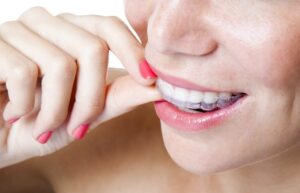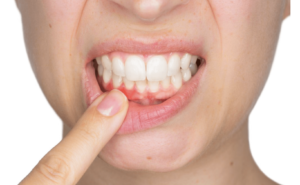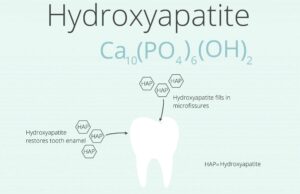Your overall health, wellness, and facial aesthetics depend on how effectively you maintain your oral hygiene. It is a fact that despite a healthy oral-care regimen, cavities, plaque, tartar, discoloration, and gum disease are very common. Fortunately, you can keep your teeth healthy and shining by visiting a dentist at regular intervals. Your dentist will examine your dental system, take x-rays, and do cleaning, flossing, polishing, and recommend suitable dental treatments to keep your dental system healthy. The whole procedure, called dental prophylaxis commonly called “prophy”, takes less than an hour and you will have healthy long-lasting functionally and aesthetically perfect natural teeth to smile with confidence.
What is Dental Prophylaxis?
Not everyone is trained to identify the onset of dental challenges. When you book an appointment for dental prophylaxis, your dentist will start with regular check-ups and clean teeth using a suitable procedure to remove plaque build-up. It is a standard preventive measure to stop tooth decay, the progression of gum disease, and other periodontal diseases. Professional cleaning by a dentist or dental hygienist will keep your oral space free of plaques and harmful infection-causing bacteria.
Proper dental cleaning done using ultrasonic scaling instruments and other high-tech devices keeps bacterial growth in check thus stopping or reversing the progression of teeth discoloration, teeth decay, bone degeneration, and gum recession. A timely preventive dental prophylaxis procedure keeps your teeth and gums healthy, so you will have strong and shining natural teeth that will last longer than average.
There is no alternative to healthy oral care practice, but visiting the dentist at least twice a year for dental prophylaxis will help you smile better. However, if you have developed peritonitis it is better to go for the procedure every 3-4 months to stop the destructive progression of dental decay.
Types of Dental Prophylaxis
The effectiveness of dental prophylaxis in preventing tooth decay and gingivitis progression is well established. There are several preventive procedures that are considered prophylactic, which includes:
Dental Check-ups
Dentists are professionally trained to identify even minor aberrations developing in your oral space, which you cannot identify, at least until it is too late. A dental examination is the first such service provided under dental prophylaxis. He will examine your teeth, gums, and other oral organs in detail using suitable tools. If he finds any sign of tooth decay or oral disease he will recommend suitable treatments to keep your teeth healthy. He might measure the depth of the gum tissue to examine the progress of gum recession.
Dental X-rays
If there are preliminary signs of tooth decay or other oral diseases, your dentist might take x-rays of your dental system. It helps in knowing the seriousness of gum recession or bone decay. Based on the diagnosis, your dentist will suggest suitable dental procedures to protect your natural teeth. X-ray is an important part of dental prophylaxis procedures, but it might not be required every time.
Dental Cleaning and Scraping
If the bacteria count is abnormally high in your oral space, your dentist might recommend dental cleaning as part of the dental prophylaxis procedure. High bacteria count along with plaque and tartar could lead to permanent loss of teeth, so leaving it untreated isn’t an option. The dental cleaning process involves the removal of plaque, tartar, and calculus using suitable tools and techniques and polishing teeth to remove exterior teeth stains. Some studies suggest aggressive and frequent scaling could damage the dental structure, so your oral hygienist conducting dental prophylaxis might administer antibiotic treatment before scaling and polishing procedure.
Dental Flossing
Brushing and flossing are necessary to keep the dental system healthy and functional. As part of the dental prophylaxis procedure, your dental hygienist will floss your teeth to remove plaques and food particles stuck between teeth after scaling and before polishing. The incidence of gingivitis is significantly low among those who regularly floss teeth.
Sealants or Fluoride Treatment
Dental sealants, a thin coating made of plastic, are one of the most effective long-term protective solutions against tooth decay. If your dentist or dental hygienist notices dental caries he will recommend fixing sealants on the teeth surface to prevent further decay.
Fluoride strengthens your teeth thus preventing tooth decay and dental cavities. It is known to alter the pH value of the oral space thus helps in keeping bacteria growth under check. Fluoride boosts re-mineralization of tooth enamel and prevents acid build-up, thus making teeth stronger.
Deposition of plaque on teeth surface inhibits the fluoride uptake, so dentists recommend dental prophylaxis as part of the professionally applied topical fluoride (PATF) procedure. The procedure, also called fluoride varnishing, involves applying fluoride to the teeth. Since it takes just a few minutes to accomplish, dentists recommend this treatment for kids susceptible to tooth decay.
Benefits of Dental Prophylaxis
Dental prophylaxis at regular intervals is the best possible preventive measure to keep your dental system healthy. Here are some of the common benefits of dental prophylaxis:
Fresh Breath: Professional dental check-up followed by standard dental cleaning procedure keeps bacteria growth in check. Bad breath is an indicator of the onset of periodontal disease, so timely preventive measures will stop the progress of gum disease, thus giving you fresh breath.
Plaque Removal: Plaque and tartar on teeth surface weaken the dental structure and inhibit fluoride uptake. Removal of rigid plaque using suitable tools and techniques, like scaling and root planing, will keep your gums healthy. If the gum starts receding you will lose natural teeth faster than average.
Aesthetics: Stained teeth make you self-conscious of appearance and you start controlling your smile. Blame it on changing food habits or your oral hygiene practice, teeth staining is bound to recur. Visiting your dentist for dental prophylaxis will help you get rid of stains, giving you the freedom to smile with confidence.
Is Dental Prophylaxis a Deep Cleaning?
Teeth cleaning is one of the parts of dental prophylaxis, which includes extensive dental check-up, deeper diagnosis using x-rays, cleaning procedures like scaling, root planing, flossing, and polishing. Unlike deep cleaning, dental prophylaxis is less risky as an antibiotic medication is administered to reduce the chances of infection. The deep cleaning procedure can be painful as it could damage nerves, expose dentine, trigger gum recession, and make teeth sensitive.
Why is Dental Prophylaxis Necessary?
You might be following your oral hygiene regime very religiously, but you won’t be able to notice visible signs of possible dental diseases. A professional dentist or oral hygienist can diagnose dental problems at an early stage and help you save your precious natural teeth in time. Problems identified in time not only help you prevent tooth decay and loss but saves you from the pain and discomfort that invasive treatments are going to cause. Regular check-ups and cleaning during dental prophylaxis appointments help you save money, which you might have to spend on unavoidable serious treatments.
How Often is Dental Prophylaxis Required?
It is a little debatable as the frequency of dental prophylaxis depends on the condition of your oral health. For a person with a healthy dental system, dentists recommend dental prophylaxis twice a year. You might not need detailed diagnosis like x-ray and deep cleaning every time, but visiting at an interval of 6 months will help you prevent dental diseases. If you have gingivitis or other gum infection, dentists recommend professional cleaning 3-4 times a year to stop the progress of gum disease. The frequency of dental prophylaxis can be shorter if you smoke, have a weak immune system, diabetic, pregnant, or any underlying medical conditions.
Does Dental Prophylaxis Require Before Braces Treatment?
If you are wearing braces to bring your misaligned teeth in the right position, you might be facing challenges in maintaining your oral hygiene. Braces or rather any device is bound to capture food particles, thus triggering bacterial outgrowth. Uncontrolled bacterial growth may cause gum infection and tooth decay. Dentists recommend dental prophylaxis before the start of orthodontic treatment so that unsafe deposits could be removed to prevent cavities and other serious oral conditions. Moving teeth is a highly complex process, so any infection could delay the treatment.
How Much Does Dental Prophylaxis Cost?
Just like any other oral treatment, the cost of dental prophylaxis varies depending on whether the procedure is done on healthy teeth or affected dental system with gum disease. Besides factors like location, the reputation of the dentist or dental hygienists, and level of plaque and tartar deposit. The cost of regular dental prophylaxis can range between $50 and $100 per quadrant. However, the cost could increase in the range of $140 to $300 per quadrant with periodontal scaling and root planing procedure. If the treatment requires local administration of antimicrobial agents you might have to pay an additional $75 per tooth. If you have dental insurance, the cost could be significantly lower if dental prophylaxis procedure is covered under regular dental insurance.
Takeaway
A smile is most important to live a joyful life of faith and trust. So, anything that helps in keeping your teeth healthy and shining will boost your confidence to smile freely. A dental prophylaxis is one of the best possible preventive measures to keep your teeth healthy and smile bright. Why take risk of developing serious dental conditions, when you can keep your dental system healthy, strong, and functionally perfect by booking an appointment for dental prophylaxis with a dentist near you.
SOURCES:
- Goodson, J. Max, et al(2004). “Microbiological changes associated with dental prophylaxis.”
https://www.sciencedirect.com/science/article/pii/S0002817714632487 - Pereira, Ruben, et al(2020). “Dental prophylaxis influence in tooth color assessment—Clinical study.”
https://onlinelibrary.wiley.com/doi/abs/10.1111/jerd.12593 - Azarpazhooh, A., and P. A. Main(2009). “Efficacy of dental prophylaxis (rubber cup) for the prevention of caries and gingivitis: a systematic review of literature.”
https://www.nature.com/articles/sj.bdj.2009.899 - Handleman, Stanley L., and Charles Hess(1970). “Effect of dental prophylaxis on tooth-surface flora.”
https://journals.sagepub.com/doi/pdf/10.1177/00220345700490022401


